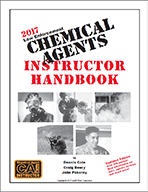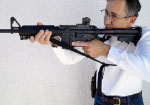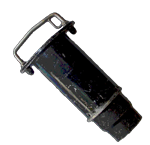The following is an ongoing case in the United States District Court - Northern District of California - San Jose Division. The court’s writings in this ruling (a motion by the defendants for summary judgement) should be reviewed by law enforcement. A review should give you a better understanding of non-lethal chemical agents as a use of force.
The chemical agents in this case were deployed using a BP5, manufactured by Sage, which “is a non-pyrotechnic barricade penetrating munition capable of delivering micro-pulverized 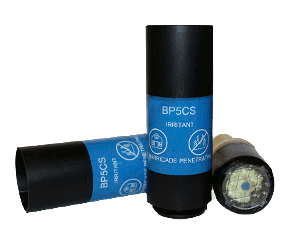 chemical agents through barricades from a 37mm rifled launcher. ”Also, the BP5 is designed to penetrate windows, doors, and other barriers.”
chemical agents through barricades from a 37mm rifled launcher. ”Also, the BP5 is designed to penetrate windows, doors, and other barriers.”
By the time the Defendants in this case executed the search warrant, the Ninth Circuit had already established that the use of chemical agents and projectile force could be considered excessive force under certain circumstances.
For example, as it pertained to pepper spray, the Ninth Circuit had “held that police officers employ excessive force in violation of the Fourth Amendment when they use pepper spray upon an individual who is engaged in the commission of a non-violent misdemeanor and who is disobeying a police officer’s order but otherwise poses no threat to the officer or others.” Young v. Cnty. of Los Angeles, 655 F.3d 1156, 1168 (9th Cir. 2011). The Ninth Circuit also held that “the use of pepper spray may be reasonable as a general policy to bring an arrestee under control, but in a situation in which an arrestee surrenders and is rendered helpless, any reasonable officer would know that a continued use of the weapon or a refusal without cause to alleviate its harmful effects constitutes excessive force.” Headwaters Forest Def. v. Cnty. of Humboldt, 276 F.3d 1125, 1130 (9th Cir. 2002) (internal quotations and emphasis omitted). Moreover, as it pertained to the use of projectile force, the Ninth Circuit had held that “every police officer should know that it is objectively unreasonable to shoot—even with lead shot wrapped in a cloth case—an unarmed man who: has committed no serious offense, is mentally or emotionally disturbed, has been given no warning of the imminent use of such a significant degree of force, poses no risk of flight, and presents no objectively reasonable threat to the safety of the officer or other individuals.” Deorle v. Rutherford, 272 F.3d 1272, 1285 (9th Cir. 2001). 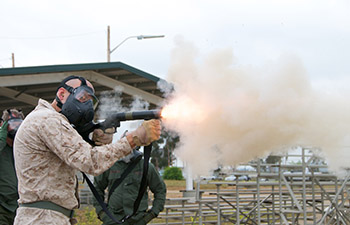
To the extent there were no specific cases about a projectile gun that deploys chemical agents, it is a well-established principle that “it is unreasonable to use significant force against a suspect who was suspected of a minor crime, posed no apparent threat to officer safety, and could be found not to have resisted arrest. ”Young, 655 F.3d at 1168.
Thus, the use of a novel device does not entitle law enforcement officers to qualified immunity if it violates this principle. See Nelson v. City of Davis, 685 F.3d 867, 884 (9th Cir. 2012) (“As we have previously held . . . an officer is not entitled to qualified immunity on the ground that the law is not clearly established every time a novel method is used to inflict injury. In this ruling the court concluded it was clearly established law that Defendants use of the BP5 to deploy chemical agents could constitute excessive force.

